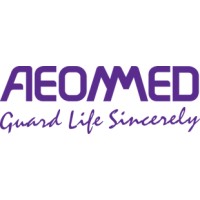Higher Efficacy of Blood Gas and Electrolyte Analyzers Driving Adoption in ICUs and Emergency Care
|
By HospiMedica International staff writers Posted on 31 Aug 2022 |

Blood gas and electrolyte analyzers are extensively used for the patients with conditions such as diabetes, hemorrhage, drug overdose, and others. These analyzers detect the blood levels, oxygen concentration, and several parameters for early diagnosis. The global blood gas and electrolyte analyzers market is projected to grow at a CAGR of 5.6% between 2022 to 2030, to reach USD 6.5 billion by 2030, driven by the increasing use of blood gas and electrolyte analyzers in intensive care units (ICUs) and emergency departments. Additionally, the growing adoption of electronic health records (EHR) and development of advanced blood gas analyzers with laboratory information systems, along with higher investment in healthcare services by governments across the world is also expected to drive market growth.
These are the latest findings of Fact.MR (Dublin, Ireland), a market research and consulting agency.
Integration of advanced technology in healthcare devices has been a boon to patients as well as the healthcare industry. The availability of portable blood analyzers coupled with the introduction of automated analyzers have led to increased demand in the market. Portable and fully automated blood and gas electrolyte analyzers require only anticoagulated blood sample and can measure multiple parameters. Hence, healthcare professionals are using these to improve the handling process and accuracy of blood tests. As a result, the demand for blood and gas electrolyte analyzers is predicted to surge by 1.5x over the forecast period.
Going forwards, the efficacy of blood gas and electrolytes in treating patients in critical and emergency situations is likely to drive demand. Consistent quality control and accuracy in error detection will continue to make blood gas and electrolyte analyzers the preferred choice for healthcare providers. Moreover, lack of alternative devices and techniques for measuring oxygen concentration and other parameters for chronic illnesses will also drive sales. However, the high cost of blood analyzers and electrolytes is likely to slow down their adoption rate, especially in the developing countries. In addition, the availability of refurbished devices and slow/non-approval of blood analyzers from FDA could hamper market growth.
By product type, the blood gas analyzers segment is expected to lead the market, owing to its growing use in disease detection. Based on modality, portable blood gas and electrolyte analyzers are anticipated to remain the preferred choice in the healthcare industry owing to their ease of use and affordability. In terms of end user, diagnostic centers and clinical laboratories are expected to witness a steady growth over the projection period. Geographically, North America is expected to be the world’s largest market for blood gas and electrolyte analyzers, with the U.S. leading the demand, while South Asia is expected to be the most lucrative market for blood gas and electrolyte analyzers, with India spearheading the region’s growth through 2022 and beyond.
Latest Business News
- Philips and Masimo Partner to Advance Patient Monitoring Measurement Technologies
- B. Braun Acquires Digital Microsurgery Company True Digital Surgery
- CMEF 2025 to Promote Holistic and High-Quality Development of Medical and Health Industry
- Bayer and Broad Institute Extend Research Collaboration to Develop New Cardiovascular Therapies
- Medtronic Partners with Corsano to Expand Acute Care & Monitoring Portfolio in Europe
- Expanded Collaboration to Transform OR Technology Through AI and Automation
- Becton Dickinson to Spin Out Biosciences and Diagnostic Solutions Business
- Boston Scientific Acquires Medical Device Company SoniVie
- 2026 World Hospital Congress to be Held in Seoul
- Teleflex to Acquire BIOTRONIK’s Vascular Intervention Business
- Philips and Mass General Brigham Collaborate on Improving Patient Care with Live AI-Powered Insights
- Arab Health 2025 Celebrates Landmark 50th Edition
- Boston Scientific Acquires Medical Device Company Intera Oncology
- MEDICA 2024 to Highlight Hot Topics of MedTech Industry
- Start-Ups To Once Again Play Starring Role at MEDICA 2024
- Boston Scientific to Acquire AFib Ablation Company Cortex
Channels
Critical Care
view channel
Ingestible Capsule Monitors Intestinal Inflammation
Acute mesenteric ischemia—a life-threatening condition caused by blocked blood flow to the intestines—remains difficult to diagnose early because its symptoms often mimic common digestive problems.... Read more
Wireless Implantable Sensor Enables Continuous Endoleak Monitoring
Endovascular aneurysm repair (EVAR) is a life-saving, minimally invasive treatment for abdominal aortic aneurysms—balloon-like bulges in the aorta that can rupture with fatal consequences.... Read more
Wearable Patch for Early Skin Cancer Detection to Reduce Unnecessary Biopsies
Skin cancer remains one of the most dangerous and common cancers worldwide, with early detection crucial for improving survival rates. Traditional diagnostic methods—visual inspections, imaging, and biopsies—can... Read moreSurgical Techniques
view channel
Robotic Assistant Delivers Ultra-Precision Injections with Rapid Setup Times
Age-related macular degeneration (AMD) is a leading cause of blindness worldwide, affecting nearly 200 million people, a figure expected to rise to 280 million by 2040. Current treatment involves doctors... Read more
Minimally Invasive Endoscopic Surgery Improves Severe Stroke Outcomes
Intracerebral hemorrhage, a type of stroke caused by bleeding deep within the brain, remains one of the most challenging neurological emergencies to treat. Accounting for about 15% of all strokes, it carries... Read morePatient Care
view channel
Revolutionary Automatic IV-Line Flushing Device to Enhance Infusion Care
More than 80% of in-hospital patients receive intravenous (IV) therapy. Every dose of IV medicine delivered in a small volume (<250 mL) infusion bag should be followed by subsequent flushing to ensure... Read more
VR Training Tool Combats Contamination of Portable Medical Equipment
Healthcare-associated infections (HAIs) impact one in every 31 patients, cause nearly 100,000 deaths each year, and cost USD 28.4 billion in direct medical expenses. Notably, up to 75% of these infections... Read more
Portable Biosensor Platform to Reduce Hospital-Acquired Infections
Approximately 4 million patients in the European Union acquire healthcare-associated infections (HAIs) or nosocomial infections each year, with around 37,000 deaths directly resulting from these infections,... Read moreFirst-Of-Its-Kind Portable Germicidal Light Technology Disinfects High-Touch Clinical Surfaces in Seconds
Reducing healthcare-acquired infections (HAIs) remains a pressing issue within global healthcare systems. In the United States alone, 1.7 million patients contract HAIs annually, leading to approximately... Read moreHealth IT
view channel















